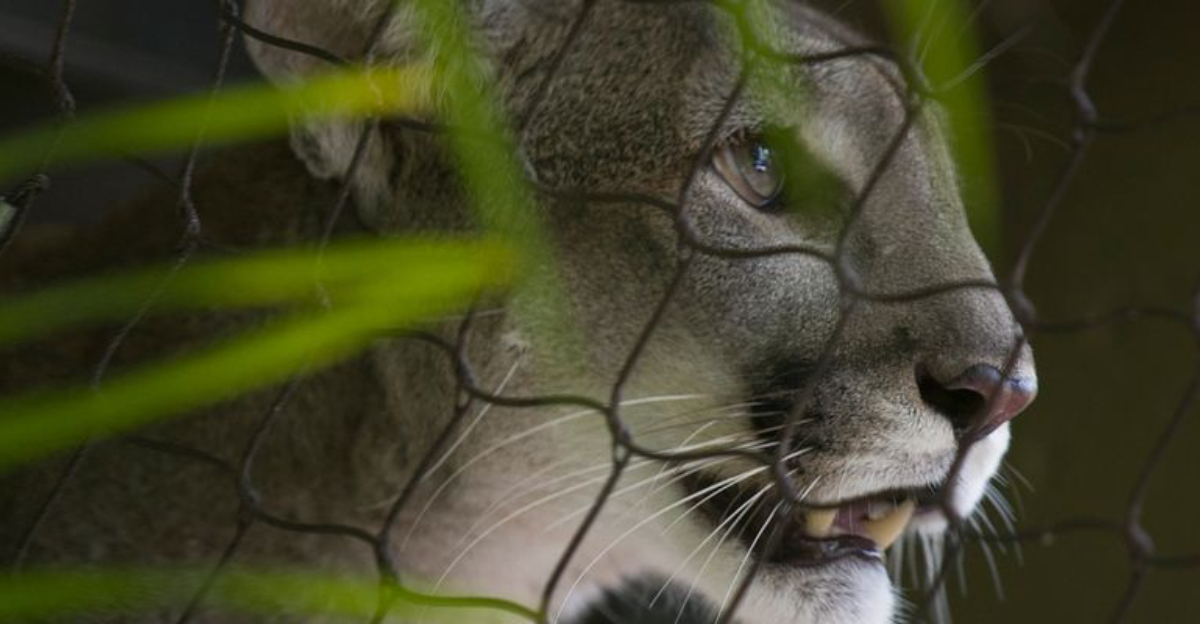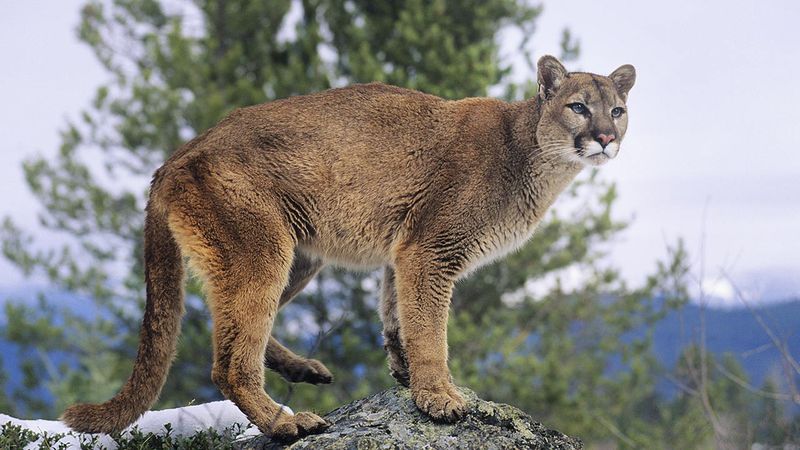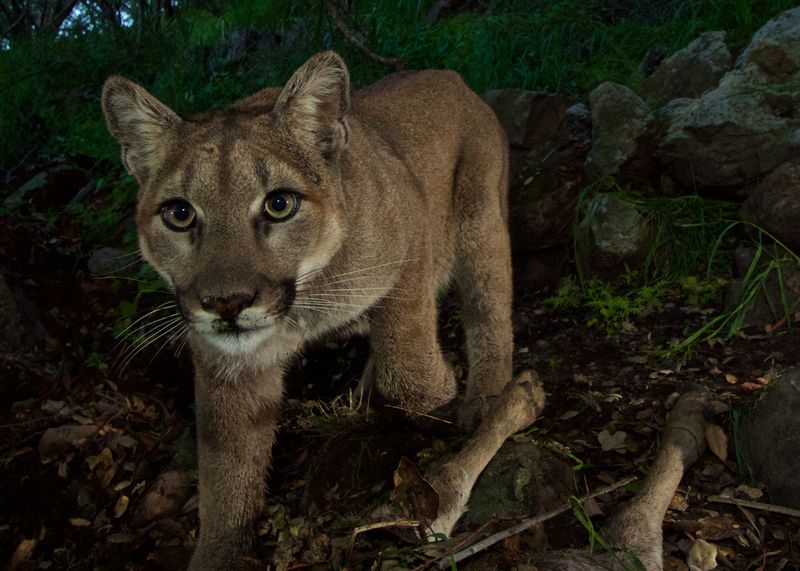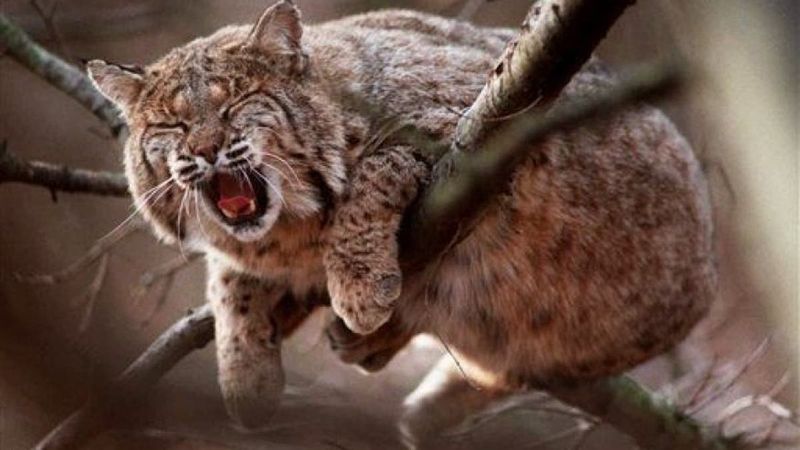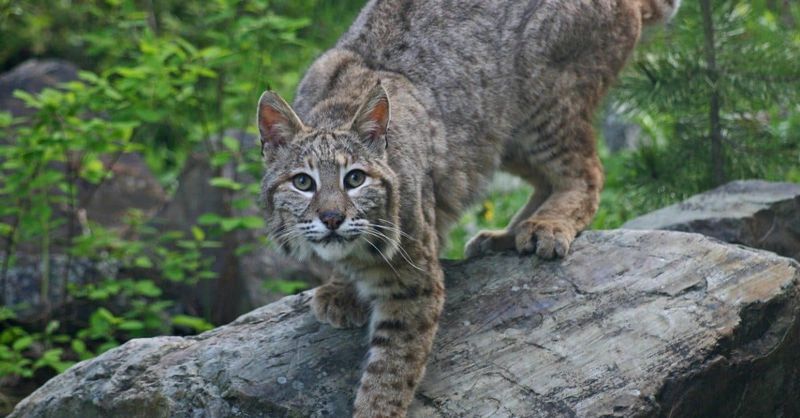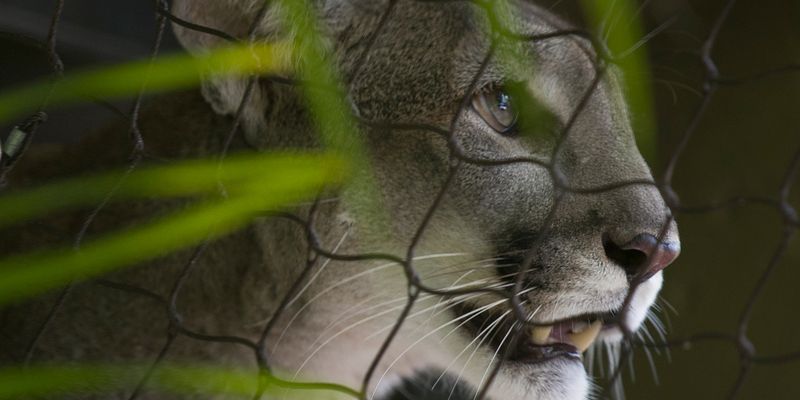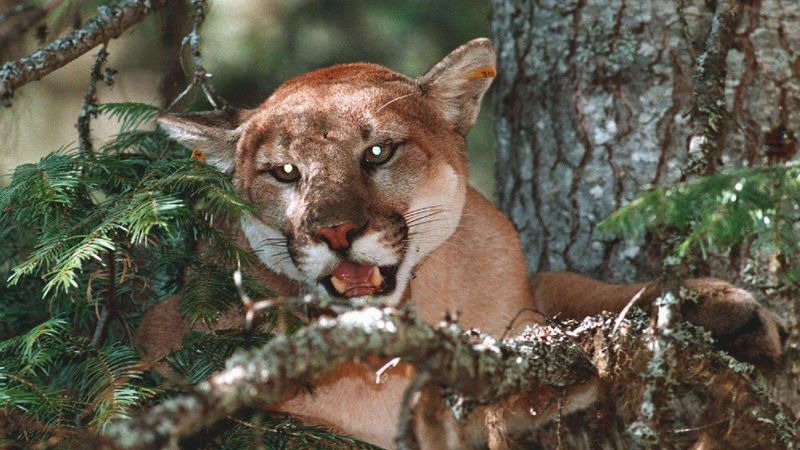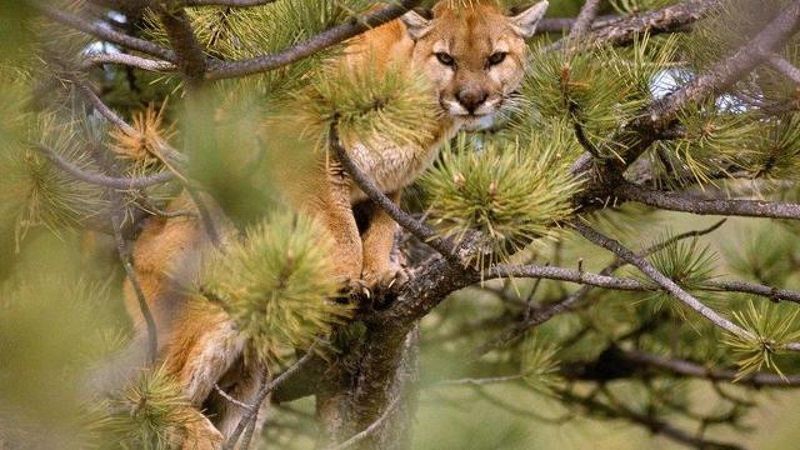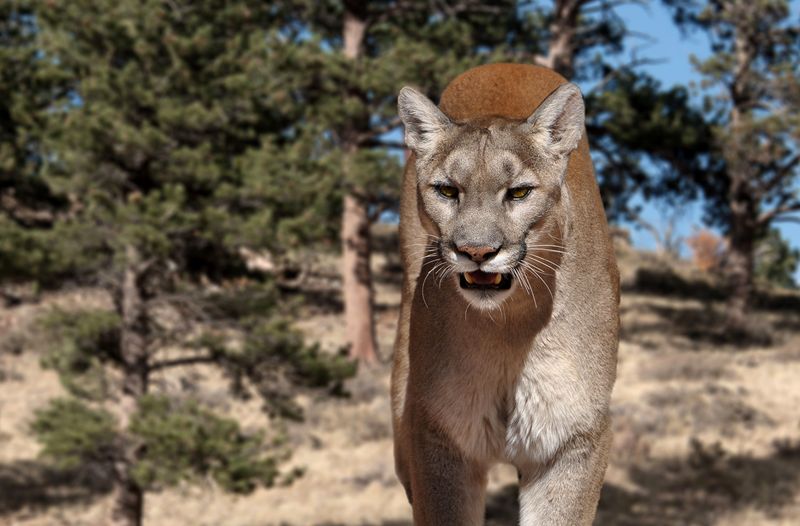📖 Table of Content:
- 1. California’s Mountain Lion Territory
- 2. Colorado’s Cougar Country
- 3. Arizona’s Desert Cat Conflicts
- 4. Texas’ Growing Wildcat Problem
- 5. Florida’s Panther Presence
- 6. Washington’s Wilderness Encounters
- 7. Oregon’s Forest Cat Confrontations
- 8. New Mexico’s Mountain Predators
- 9. Idaho’s Backcountry Big Cats
- 10. Michigan’s Surprising Cougar Comeback
Encounters with wild cats can shift from fascinating to dangerous in an instant. These predators, including bobcats and mountain lions, are strong, fast, and built for survival. When their territory overlaps with populated areas, conflict can occur unexpectedly.
As human development expands into natural habitats, the chances of crossing paths with wild cats increase. In some states, these encounters happen more frequently, leading to reports of sightings and even attacks. While rare, such incidents highlight the importance of awareness and caution.
Knowing which areas have higher rates of wild cat activity allows residents and visitors to take practical precautions. Staying informed about local wildlife behavior can reduce the risk of dangerous interactions. A bit of preparation can go a long way in staying safe while respecting the presence of these powerful animals.
1. California’s Mountain Lion Territory
The Golden State leads the nation in mountain lion encounters, with dozens of reported attacks over the past century. These powerful cats roam the state’s vast wilderness areas, especially in the Sierra Nevada mountains and coastal ranges.
Most confrontations happen when humans venture into remote trails at dawn or dusk – prime hunting times for these stealthy predators. California’s Department of Fish and Wildlife receives hundreds of sighting reports annually, though actual attacks remain relatively rare.
Hikers should travel in groups, make noise while walking, and never run if they spot a mountain lion, as this can trigger the cat’s chase instinct.
2. Colorado’s Cougar Country
Rocky Mountain wilderness provides a perfect habitat for mountain lions, making Colorado second on our list. The state’s expanding suburban areas increasingly border wild spaces, creating more potential for human-cougar encounters.
Colorado Parks and Wildlife has documented several serious attacks in recent years, particularly involving children or solo hikers. Cougars typically avoid people, but may become curious about small moving objects – including running children.
Residents in foothill communities often install motion-activated lights and remove vegetation that could provide hiding spots near homes. These simple precautions significantly reduce the chance of unwanted visitors prowling around properties.
3. Arizona’s Desert Cat Conflicts
Bobcats and mountain lions thrive in Arizona’s diverse landscapes, from cactus-studded deserts to pine-covered mountains. The state ranks third for wild cat encounters, with both species occasionally entering residential areas in search of water during drought periods.
Attacks on humans remain uncommon, but pets frequently become targets. Small dogs and outdoor cats sometimes disappear from backyards in communities bordering natural areas.
Wildlife officials respond to dozens of nuisance calls annually, typically involving cats attracted to bird feeders or water sources. Removing these attractants and securing trash can dramatically decrease the likelihood of finding a bobcat lounging on your patio furniture.
4. Texas’ Growing Wildcat Problem
Everything’s bigger in Texas – including the territory of wild cats. Both bobcats and mountain lions roam the Lone Star State, with bobcats increasingly adapting to suburban environments. Rural counties report numerous livestock predation cases annually.
Human attacks remain exceptionally rare, though sightings have increased as development pushes into formerly wild areas. Ranch owners in West Texas frequently spot mountain lions near livestock operations.
Bobcats show remarkable adaptability, sometimes establishing territories in greenbelts within major cities like Dallas and Houston. These smaller cats rarely pose threats to adults but could potentially target small pets or unattended young children in backyard settings.
5. Florida’s Panther Presence
Florida panthers represent one of America’s most endangered species, with fewer than 200 remaining in the wild. Despite their rarity, these magnificent cats occasionally create conflicts in southwest Florida communities.
Attacks on humans are virtually nonexistent in modern times, but livestock and pet predation occurs regularly in rural Collier and Hendry counties. Conservation success has allowed panther populations to gradually recover, creating new challenges as their range expands.
Motorists face the greatest risk from panthers – not from attacks, but from high-speed collisions on dark rural roads. Wildlife crossing structures have helped reduce these deadly accidents while allowing panthers to safely traverse their shrinking habitat.
6. Washington’s Wilderness Encounters
The Pacific Northwest’s dense forests harbor healthy cougar populations, placing Washington sixth on our list. The state records several dozen concerning encounters annually, with occasional serious attacks occurring in remote areas.
Mountain bikers face particular risks, as their rapid movement can trigger a cougar’s chase instinct. Several high-profile incidents involved cyclists in recent years.
Washington wildlife officials have noticed behavioral changes in some cougars that lose their natural wariness of humans. Experts theorize that reduced hunting pressure in some regions may contribute to this concerning trend. Residents in rural communities often report seeing tracks around homes during winter months when deer descend to lower elevations.
7. Oregon’s Forest Cat Confrontations
Oregon’s diverse landscapes support approximately 6,000 cougars, with populations steadily increasing over recent decades. The state records numerous sightings yearly, particularly in the Cascade Range and coastal mountains.
Actual attacks remain rare, but wildlife officials respond to dozens of situations where cougars display concerning behavior. Rural homesteaders sometimes lose livestock to these efficient predators.
Hunters occasionally report being stalked while field-dressing deer – the scent of blood can attract cougars from surprising distances. Oregon’s wildlife management policies have shifted over time, with current approaches focusing on targeted removal of problem animals rather than general population control through hunting seasons.
8. New Mexico’s Mountain Predators
New Mexico’s rugged terrain provides excellent habitat for both bobcats and mountain lions. The state’s rural communities occasionally experience livestock predation, particularly in areas bordering wilderness.
Human attacks occur very rarely, though hikers in the Sangre de Cristo and Sacramento mountains sometimes report concerning encounters. Wildlife officials emphasize that most cats avoid human contact whenever possible.
Drought conditions sometimes push mountain lions closer to residential areas as they follow deer seeking irrigated vegetation. Homeowners near natural areas should avoid outdoor feeding of pets and secure garbage cans to prevent attracting wildlife. Keeping small children supervised outdoors remains prudent advice in regions known to have resident cat populations.
9. Idaho’s Backcountry Big Cats
Mountain lions are well established in Idaho’s central mountains and Panhandle. The state’s remote terrain provides ample space for them to roam. Occasionally, outdoor enthusiasts report unnerving encounters with these predators.
The state’s wildlife management approach includes regulated hunting seasons to maintain population balance. Despite widespread cougar presence, attacks remain statistically rare events.
Remote cabins sometimes attract curious cats, especially during harsh winter conditions when natural prey becomes scarce. Wildlife officials recommend motion-activated lighting and removing potential hiding spots near rural homes. Keeping children within sight when playing outdoors represents common sense in areas where tracks or scat indicate recent cougar activity.
10. Michigan’s Surprising Cougar Comeback
Cougar sightings in Michigan’s Upper Peninsula are on the rise. These big cats, once considered extinct in the state, are slowly reappearing. Their return is likely due to natural migration from the West.
While no recent attacks have been documented, wildlife officials track sightings carefully as these apex predators reestablish themselves. Trail cameras occasionally capture images of cougars moving through forests far from human settlements.
Experts believe Michigan’s cougar population remains small, with individuals maintaining large territories. Outdoor enthusiasts should stay alert in remote areas, especially around dusk and dawn when cats actively hunt. The state’s deer population provides abundant natural prey, reducing the likelihood of human-cat conflicts.
